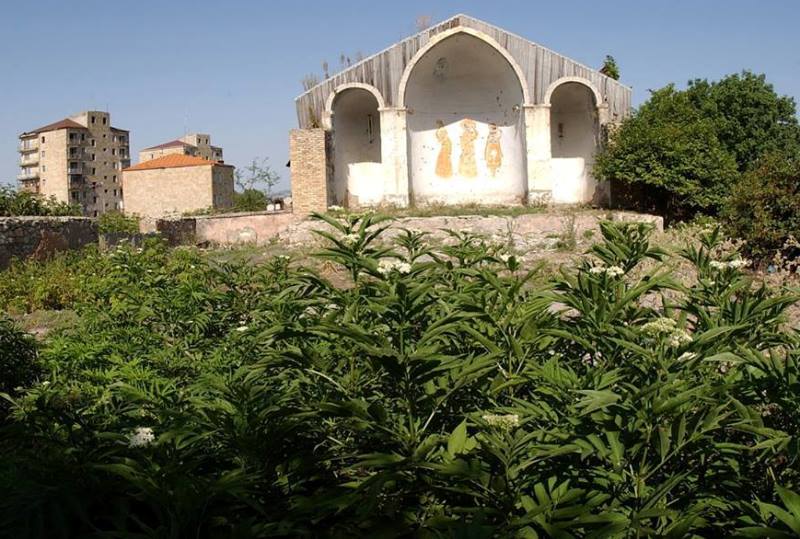St. Aguletsots Savior church is located in the center of Shushi, in Artsakh. According to the church`s name it was built by immigrants of Agulis. Before the construction of Ghazanchetsots church it was the largest in the city, that`s why it was called “ the elder”. It was built on the four pillars, has a perimeter step pedestal, dome-shaped structure inside the two-stored chapels, which proceeds to the stage on both sides of the main altar. The gable roof is covered by limestone, 3 chapels reses on it. The biggest one was placed in the center of the roof of the church, while others are in the eastern and western ends, just as Amaras church in 16th century. Three-story bell tower built on the western wall of the church are not complied.
On the southern door`s façade the large inscription about the church building was kept.” St. Savior church was built by Zohrab Yavhanjan, Mark and Baba Mateosean in 1822”.
Aguletsots St. Savior church contributed the formation of the city center and around it`s neighborhood Ghazanchetsots church was built, Khandamiryan`s 350-seat auditorium, tree-story club, urban park, number of beautiful and commercial buildings. As a result, the center has become a great place for social gatherings. This center`s religious and commercial description completed urban park, stone fountains, paving streets. All the buildings in the center were built from white limestone, which was typical for armenian architecture. Also the monument of Shushi`s Meghretsots church is very valuable, built with the same principles as Aguletsots church. It was built by immigrants from Megri. In protocols it is referred as St. Meghretsots Saviour church, built in 1833 by Mahtesi Hakhumyants. The prayer hall had a rectangular dimensional setup. In 1960 the architectural complex was demolished, adapted and turned into a summer outdoor cinema. The eastern wall of the church is still preserved.







